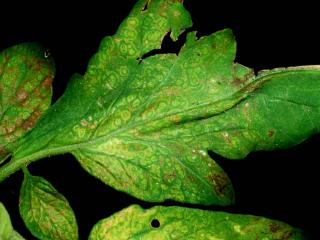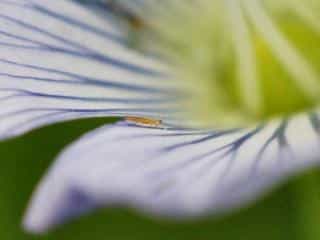

Western Flower Thrips is a type of thrips common on leaf plants, flowers, and veggies.
Western Flower Thrips facts
Name – Frankliniella occidentalis
Order – Thysanopthera
Sub-order – Terebrantia
Danger – low, may spread fatal virus
Distribution: worldwide – Target hosts: over 250
This tiny pale-yellow thrips might contaminate your tomato plants with the fatal tomato spotted wilt virus. But for other plants, damage is mostly cosmetic.
Key symptoms most certainly reveal an infestation of Western flower thrips.
 A devastating disease is transmitted by Western Flower thrips as it feeds from one plant to the next.
A devastating disease is transmitted by Western Flower thrips as it feeds from one plant to the next.
A thrips that has fed on an infected plant at any stage of its lifecycle will infect all other plants it may feed on.
Many plants of the Solanaceae family can catch the disease if a contaminated thrips lands and feeds on them: tomato, potato, eggplant…
A colony of Western Flower thrips will result in cosmetic damage mostly. In some cases like vegetables or fruits, however, the harvest may be reduced in quality and quantity, too. The damage is similar to that of other thrips.
A few telltale signs are the following:
 silver-white patches on leaves, these turn yellow-brown after while
silver-white patches on leaves, these turn yellow-brown after whileAs a result, ornamental flowers aren’t as beautiful. Fruits and vegetables are smaller and the harvest is less abundant, and they may even be scarred and unsalable.
Thrips will rarely kill a plant.
Western flower thrips have been found feeding and/or reproducing on over 250 different plants belonging to many different families.
 Nearly all ornamental plants will at some point carry these thrips:
Nearly all ornamental plants will at some point carry these thrips:
are among the most vulnerable.